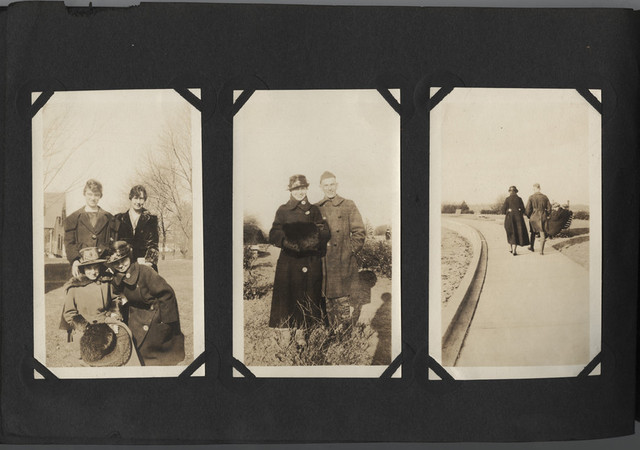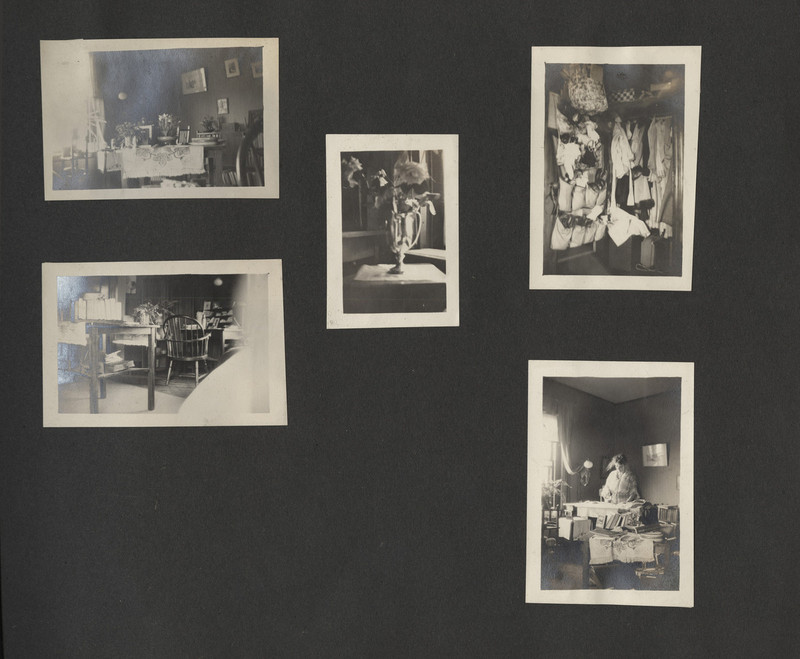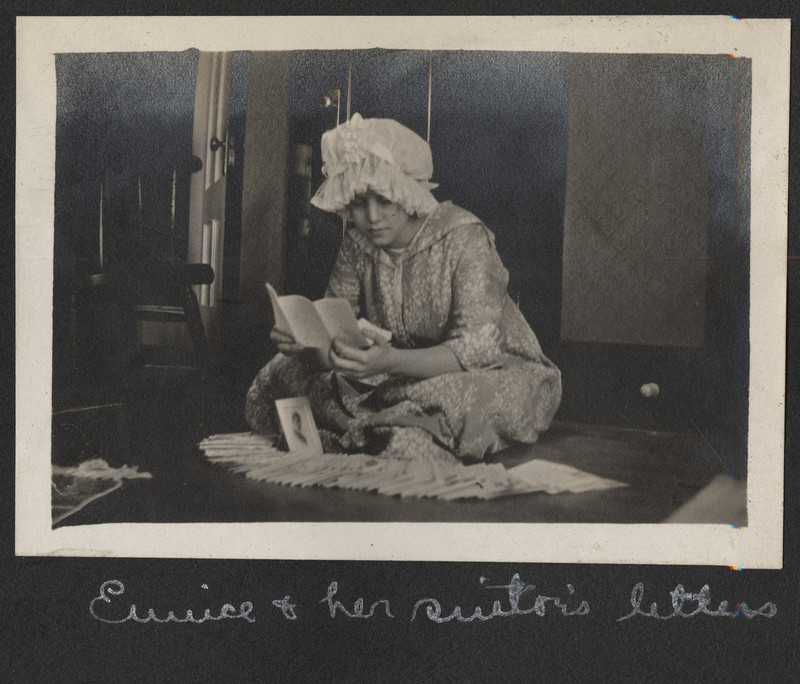Call for Knitters: Campus during the War
While the United States did not enter the World War I until 1917, the events in Europe did impact American’s lives at home. The United States declared a “non-intervention” policy in 1914 at the conflict’s outset. Other events on the world stage turned American attention towards Europe, particlarly once a German u-boat sunk the Lusitania in 1915, which included Mount Holyoke alumna Dorothy D. Allen, ’09, and 128 other Americans. As an anxiety grew at home, a “Preparedness” movement began to prepare the country for entry into the war.
Americans and Mount Holyoke students alike were divided about whether the United States should enter the war or remain isolated from conflict. Despite some campus ambivilence, students did rally to raise funds and ready supplies for the growing war effort.
“We are in a little cottage called Pearsons Annex”
In early Septemeber, first year Ruth Parker wrote home to talk about her dorm mates, the food, and her courses. What will you study? How will you describe your dorm mates to your families?

Lights out at 10pm, or else: Dorm life
Ruth Parker described some of the touches of dormitory life in 1913. While there are some enduring features of campus life at Mount Holyoke, students in 1913 were governed by strict rules and routines. The campus issued regulations that guided the day-to-day lives of students such as 10 PM bedtime, no men in residence halls, and daily physical exercise. Many outside connections were best maintained with weekend visits and letters. How will you maintain connections to home during your first months at Mount Holyoke?
“I tell you those doughnuts were nice!”
In November, 1914, Hortense Hubbard, Ruth Paker’s housemate, writes a letter home documenting some of her financial and academic challenges. She expreses appreciation of the doughnuts her family sent to her as a care package. What types of food will miss the most from home?










